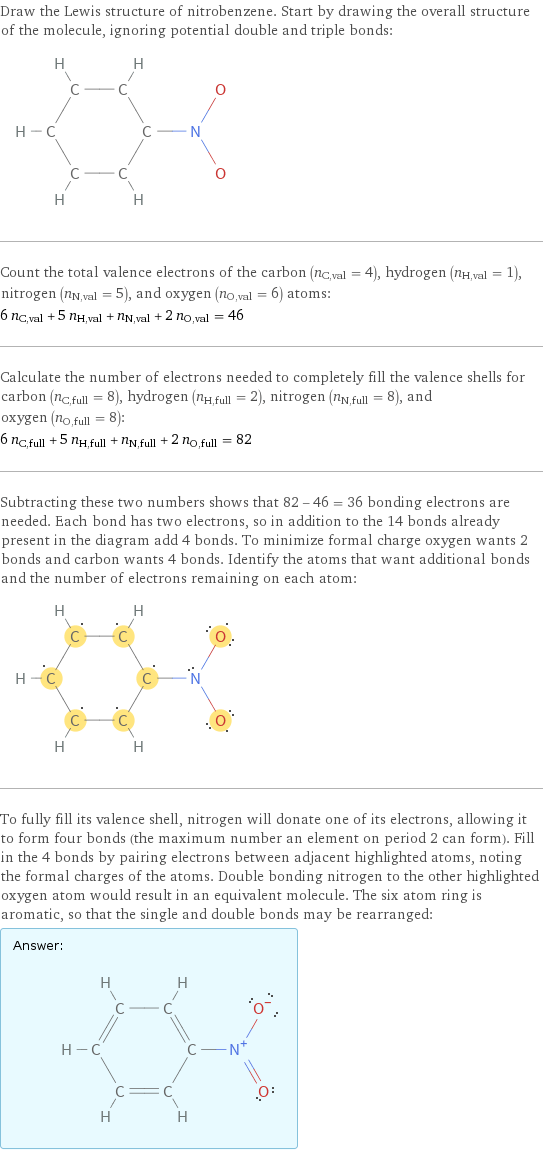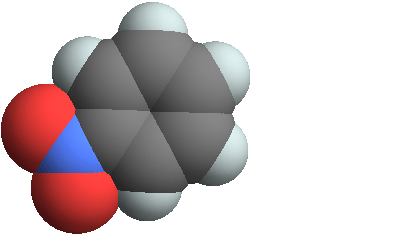Input interpretation

nitrobenzene
Chemical names and formulas

formula | C_6H_5NO_2 name | nitrobenzene alternate names | essence of mirbane | mirbane oil | nitrobenzol | oil of mirbane mass fractions | C (carbon) 58.5% | H (hydrogen) 4.09% | N (nitrogen) 11.4% | O (oxygen) 26%
Lewis structure

Draw the Lewis structure of nitrobenzene. Start by drawing the overall structure of the molecule, ignoring potential double and triple bonds: Count the total valence electrons of the carbon (n_C, val = 4), hydrogen (n_H, val = 1), nitrogen (n_N, val = 5), and oxygen (n_O, val = 6) atoms: 6 n_C, val + 5 n_H, val + n_N, val + 2 n_O, val = 46 Calculate the number of electrons needed to completely fill the valence shells for carbon (n_C, full = 8), hydrogen (n_H, full = 2), nitrogen (n_N, full = 8), and oxygen (n_O, full = 8): 6 n_C, full + 5 n_H, full + n_N, full + 2 n_O, full = 82 Subtracting these two numbers shows that 82 - 46 = 36 bonding electrons are needed. Each bond has two electrons, so in addition to the 14 bonds already present in the diagram add 4 bonds. To minimize formal charge oxygen wants 2 bonds and carbon wants 4 bonds. Identify the atoms that want additional bonds and the number of electrons remaining on each atom: To fully fill its valence shell, nitrogen will donate one of its electrons, allowing it to form four bonds (the maximum number an element on period 2 can form). Fill in the 4 bonds by pairing electrons between adjacent highlighted atoms, noting the formal charges of the atoms. Double bonding nitrogen to the other highlighted oxygen atom would result in an equivalent molecule. The six atom ring is aromatic, so that the single and double bonds may be rearranged: Answer: | |
3D structure

3D structure
Basic properties

molar mass | 123.11 g/mol phase | liquid (at STP) melting point | 5.5 °C boiling point | 210.5 °C density | 1.196 g/cm^3 solubility in water | insoluble
Units
